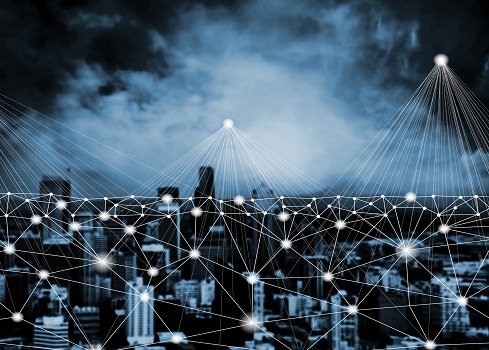3 Reasons to Embrace Edge Computing
With our inclination to chase after new and shiny objects, you might be forgiven for assuming that the edge is just the latest one. It is not.

The shift toward the cloud has raised the bar for enterprises’ agility, speed, and performance -- all while lowering the bar on cost. However, as enterprises process more data in real time, they need to address the speed and latency issues inherent in sending that data to the cloud and back again.
While a little lag time is inconvenient in some scenarios, latency can be downright dangerous in others: think medical devices, emergency services or self-driving vehicles. The answer? Edge computing.
Edge computing refers to data that is processed at or near its source -- and it is on the path to dominating in short order. By 2025, Gartner predicts that three quarters of data generated will be processed outside a traditional centralized data center or cloud, up from 10% in 2018.
So, let’s crystallize why this is happening and why it’s worth embracing.
1. Customer experience enabled by the edge
In September of last year, IDC’s Dave McCarthy summarized edge products and services as “powering the next wave of digital transformation.” In that next wave, we can add some of the biggest growth areas in tech such as IoT, AI, digital payments, medical devices, connected cars and more.
For many of the use cases associated with these technology areas, edge computing will be foundational -- meaning that certain use cases would simply not be feasible or sustainable without it. As enterprises continue to innovate, the edge will underpin new forms of customer experience -- and by extension, business models -- in ways that wouldn’t have been possible previously.
Even going beyond the scenarios where the edge is critical and into the territory of “desirable”, we can expect many more enterprises to join the rush to the edge. If a business can transform its mass- market, consumer-facing app into a lightning fast, responsive, and reliable service through use of the edge, that will be an investment in a superior customer experience, which could be just the “edge” that a company needs to pull ahead of the pack.
2. Analytics at the edge
The ability to filter and analyse incoming data from sensors and other devices is one of the big advantages of edge computing.
In-built analytics and even AI capabilities can quickly extract value from the vast amounts of data collected. By converting inputs into actionable intelligence, they not only speed up performance, but they also ensure that only the most important data is retained for storage or further analytics in the cloud.
Using a real-world example, a bioelectric medical technology company had pioneered a solution that transformed the treatment of essential tremor (ET), a condition suffered by an estimated 2.2% of the US population. For a long time, the only way to treat this chronic condition was either a partially effective prescription or brain surgery. Using the company’s electrotherapy-based nerve stimulating wristband with monitoring and diagnostics at the edge, the patient can receive treatment that is calibrated to treat their specific tremor symptoms. This customization was enabled and enhanced by its usage of the edge, in combination with the cloud.
3. Enhanced privacy and security enabled by the edge
Despite the talk of living in “a post-privacy age”, I suspect that many of us have not entirely bought into that paradigm yet. And that goes double -- or triple -- for enterprises, wherein their data is increasingly the lifeblood of their business. Edge computing reduces the amount of data being transferred over a network and it reduces the volume of centrally held data by third parties, which is all good news for enterprises from a risk and compliance perspective.
Likewise, distributed denial-of-service (DDoS) attacks become more challenging for the perpetrators. That is not to say that other risks are not increased, based on the increased attack vectors in cases where there are distributed sensors, for example. But this is just an unfortunate fact of life that cybersecurity has to be well thought through and “baked into” any new technical architecture.
If you’ve been in the tech space for some time, understanding our proclivity towards chasing after new and shiny bandwagons, you might be forgiven for assuming that the edge is just the latest bandwagon. It is not. There is something more fundamental happening here. We’re witnessing the early stages of a transformation of how data and compute power are managed, no less significant than the transformation enabled by cloud computing.
In a different time, there was wisdom in the concept of “second-mover advantage”, where you could peacefully watch your competitors make mistakes and iron out the kinks related to a new technology. With edge computing, the transformation in speed and capability -- and the resulting improvement in customer experience -- wipes out the second-mover advantage. At this stage, if you’ve not already started your journey to the edge, it is time to do your research, get good advice, and work out the implications for your business.
About the Author(s)
You May Also Like







